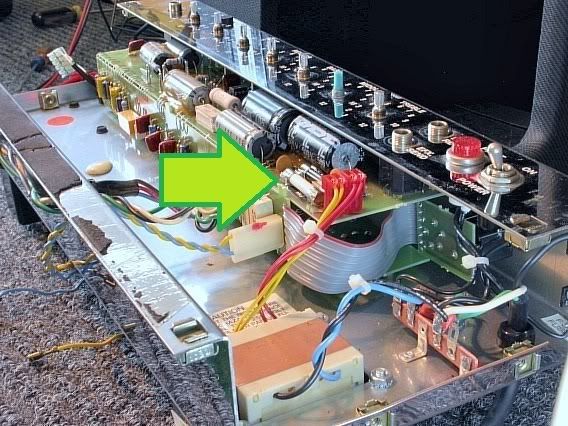I'm looking for a bit of help, or a nudge in the right direction. My trusty (well, till yesterday) C30 has stopped working. A brief description:
the power light comes on
there is a hum (from the transformer?)
none of the valves light up
That may be the least well-informed description you're likely to hear - I know next to nowt about amps, I'm afraid - but I think that's it. I'm just looking to get it back running again without having to take it to a tech, which I just can't afford. It's a great wee amp, and I'd be gutted if I couldn't get it back on track.
Any help or advice seriously appreciated.
help please: peavey classic 30 died on me yesterday
Moderated By: mods
If the power light comes on, then the mains fuse (there probably is one) is OK.
There's probably a fuse for the heater or high tension ('HT') that runs to the tubes, if the tube heaters are not functioning then they won't light up. I'm thinking you may have had a tube failure that caused this fuse to go out.
Fuses will be in the chassis with all the other good stuff. I suggest pulling all your tubes out before trying to remove the chassis. Be careful, this is the part where you can get electrocuted.
Generally you can visually tell a fuse is bad, but if not; just put a multimeter on continuity/diode test and see if there there is continuity between the ends of the fuse - if there is then the fuse is OK.
It's kinda tough to diagnose problems via internet.
There's probably a fuse for the heater or high tension ('HT') that runs to the tubes, if the tube heaters are not functioning then they won't light up. I'm thinking you may have had a tube failure that caused this fuse to go out.
Fuses will be in the chassis with all the other good stuff. I suggest pulling all your tubes out before trying to remove the chassis. Be careful, this is the part where you can get electrocuted.
Generally you can visually tell a fuse is bad, but if not; just put a multimeter on continuity/diode test and see if there there is continuity between the ends of the fuse - if there is then the fuse is OK.
It's kinda tough to diagnose problems via internet.
Here's a photo that shows two internal fuses, and also a link to some site that shows how to remove the chassis.

http://www.bustedgear.com/repair_Peavey_classic_2.html

http://www.bustedgear.com/repair_Peavey_classic_2.html
Thanks, that's really helpful. I'm definitely up for trying to replace the fuse(s) initially - the amp's been unplugged with the power switch on (I'm sure I read somewhere that that was a good idea?) for 24 hours. Does the electrocution risk decrease over time, i.e. would it help to leave it for a while longer?
Electricity sure is scary. But er...fun.
Electricity sure is scary. But er...fun.
No, consider all those big capacitors 'instant death containers'. Even if they've been 'discharged'.
Just be careful and try to work with only one hand at a time. It's the current flowing through your arms and then vital organs (heart, brain etc...) that does the most damage.
Make sure you replace the fuses with the same amp value and the same voltage or higher.
Just be careful and try to work with only one hand at a time. It's the current flowing through your arms and then vital organs (heart, brain etc...) that does the most damage.
Make sure you replace the fuses with the same amp value and the same voltage or higher.

